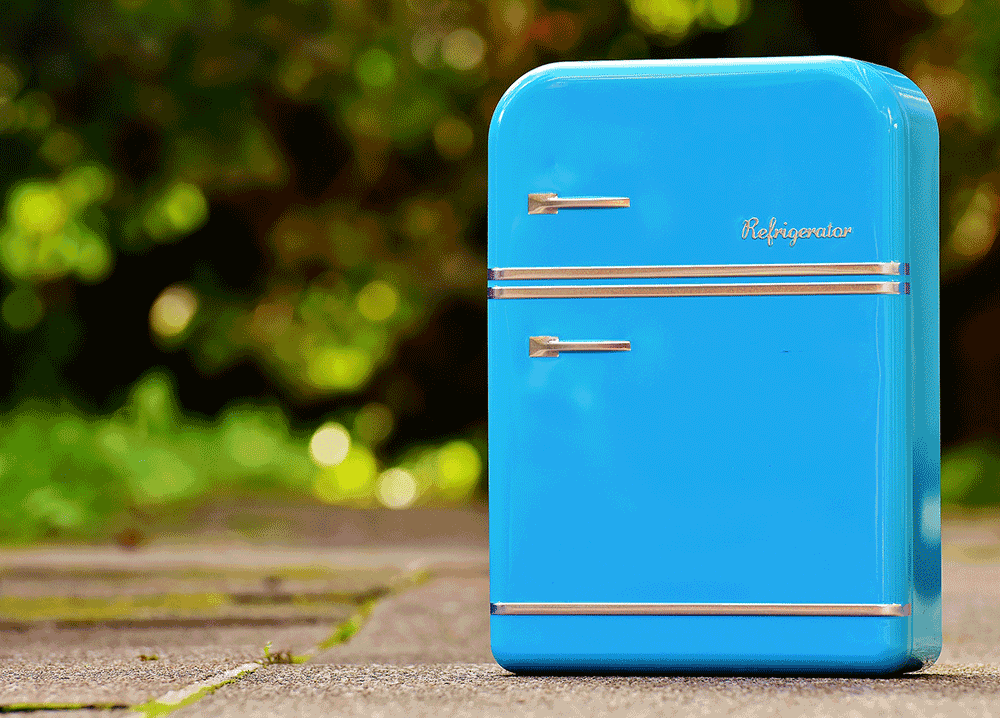
 Storage Tips
Storage Tips8 Simple Steps to Prepare a Refrigerator for Long Term Storage
Storing a refrigerator long-term isn't a major challenge but your storage method should be as simple as possible to avoid any complications. By following these steps, you make sure that you can store your fridge as safely as possible.
- Turn off the Fridge
- Clean the Fridge
- Remove All Doors
- Measure the Fridge
- Preparing Your Fridge
- Moving the Fridge Properly
- Storing the Fridge Effectively
- Check Up on Your Fridge
Step One - Turn Off the Fridge
When planning long-term storage for your fridge, make sure you turn it off the night before storage. It would help if you let the refrigerator cool down to room temperature and the ice in the freezer to melt. There are a few reasons that you need to do this step before any storage, each of which is critical to consider.
First, defrosting the fridge helps to get rid of any frozen items that may cause water damage in your storage center. Next, it allows the liquids and oils throughout your fridge's coils to settle down. When these oils are settled, the refrigerator is much safer to store. In this way, you'll have fewer complications.
Step Two - Clean the Fridge
After you wake up and clean up any of the water that may be outside of your fridge, you need to clean the inside. Take an excellent disinfecting cleaner and scrub the surfaces inside vigorously. Pay attention to stains and other areas, and make sure to break these apart. Do the same on the outside.
This step is about more than just making sure your fridge looks nice. You are also destroying the food that mold may eat to grow in your fridge. And once you are done cleaning, a box of baking soda can help to not only get rid of nasty smells but also prevent mold growth as well.
Step Three - Remove All Doors
After you've cleaned out the surface of your fridge and disinfected the surface, dry everything with a soft cloth, and carefully remove every door. These doors will include the sliding ones that make up your drawers. Also, make sure to take out any shelves and remove your fridge door from its hinges.
Why are you taking the time to remove these doors? First, removing the interior doors keeps them from knocking around and falling out. Secondly, removing the exterior door makes storage safer and minimizes mold risk. Lastly, taking out all these doors lightens your load considerably, making movement safer.
Step Four - Measure the Fridge
At this point, your fridge is ready to move and store. However, you need to measure the width, length, and depth of the fridge before you start moving. After you measure the refrigerator, go through your home and your storage area, and measure all doors and hallways where you'll take the fridge.
Doing so helps you to prepare for any problems. First of all, it enables you to know what to expect you move the fridge. You'll be able to know what doors will be a problem and which should be easy to pass. Secondly, you can plan any careful positioning of your fridge through these doorways.
Step Five - Preparing Your Fridge
Before you move your fridge, you need to wrap it in protective moving blankets from top to bottom. Tie these blankets down with straps to make sure that they are tight. These blankets help to protect your fridge from damage during the move by buffeting it against the side of the dolly and any walls it may hit.
Now, slide a wide dolly underneath the fridge as far as it will go. Take some elastic straps and carefully wrap them around the dolly and the refrigerator. Make sure to lock these in place to avoid any slipping and sliding. Try to find straps that have a locking mechanism to keep them fully in place.
Step Six - Moving the Fridge Properly
After you lean the fridge back onto the dolly, you can start moving it through your home and out to storage. Keep the fridge as upright as possible during this move. If the refrigerator ends up on its side, it may end up suffering damage due to moving chemicals and damaged internal mechanisms. You can take it to about a 30-45 degree angle safely.
Don't move this fridge on your own because you're likely to injure your back or suffer other problems. Instead, have a few people who can help support the fridge and direct it through the door. One person - the least strong - should be there to spot the direction of the refrigerator as you move it through doorways and outside.
Step Seven - Storing the Fridge Effectively
Load your fridge into a truck or a trailer, strap it down, and then drive it to the storage facility. Use boards or a ramp to make this step easier. Then, you can lower the fridge using the same incline and place it in a purpose-built storage facility.
Try to find a facility that has climate control to minimize humidity and temperature-related problems. A good storage center also needs protection from theft, fire, and pests. Find one that serves your needs and then store your fridge here. Place a box around the refrigerator for extra protection and lock it up.
Step Eight - Check Up on Your Fridge
As time passes, you may want to check up on your refrigerator occasionally. Try to visit your storage center at least once every few months to see how it is doing. Do you notice any bad smells? Are animals or pests trying to make nests inside? Manage these issues properly to keep your fridge safe.
We're Your Storage Solution!
Storage Rentals of America is your convenient self-storage solution. So come into our office or give our storage experts a call at 1-800-457-5678. Our call center is available 7 days a week and can help determine which storage unit size best fits your storage needs.



